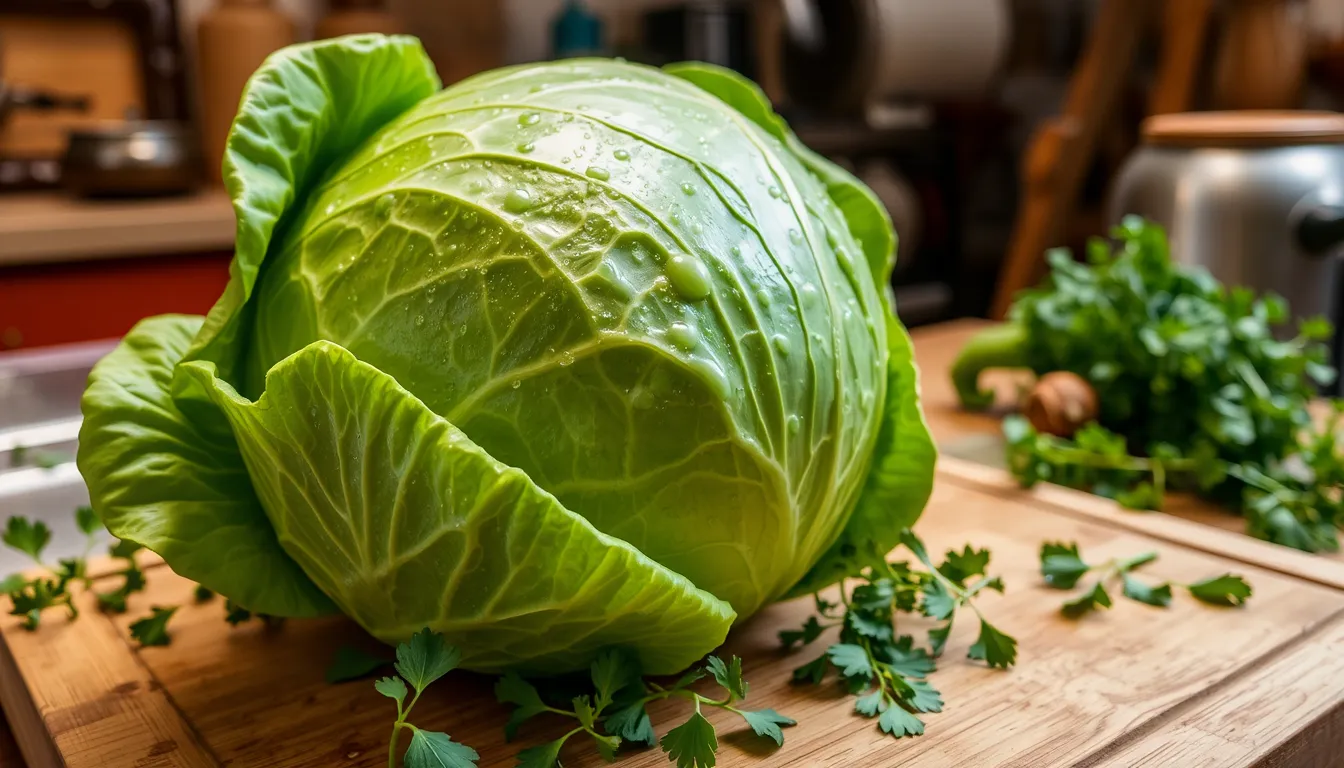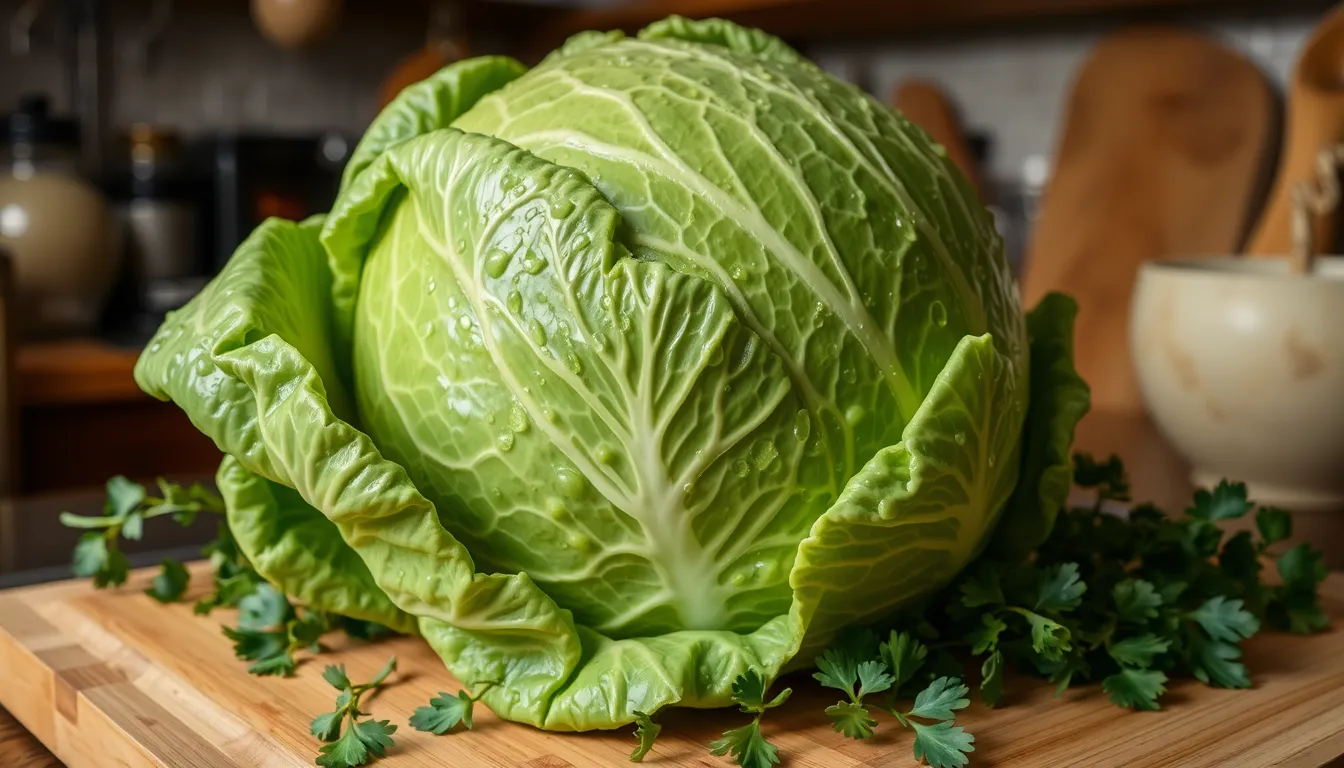To create delicious holubtsi, or stuffed cabbage rolls, you will need a variety of ingredients that come together to form a hearty and flavorful dish. Here’s a list of the essential components you will require to make this traditional Ukrainian meal:
| Ingredient | Quantity |
|---|---|
| Cabbage (preferably green cabbage) | 1 large head |
| Ground meat (pork, beef, or a mix) | 1 pound (450 grams) |
| Cooked rice | 1 cup |
| Onion | 1 medium, finely chopped |
| Garlic | 2-3 cloves, minced |
| Fresh herbs (dill, parsley, or a mix) | 1/4 cup, chopped |
| Salt | 1 teaspoon |
| Pepper | 1/2 teaspoon |
| Tomato sauce (or crushed tomatoes) | 2 cups (for cooking and serving) |
| Sour cream (for serving) | Optional, to taste |
These ingredients can vary slightly based on personal preference and regional variations in Ukrainian cooking. For a vegetarian option, you might substitute the meat with lentils or mushrooms, staying true to the essence of this beloved dish. Make sure to gather everything you need before diving into the cooking process—it will make your time in the kitchen much smoother and more enjoyable!
Preparing the cabbage leaves
Preparing the cabbage leaves is a crucial step in making holubtsi, as the cabbage acts as the perfect vessel for the savory filling. Begin by selecting a large head of green cabbage, as it’s the most commonly used variety for this dish. The first step involves blanching the cabbage to soften its leaves, making them pliable for rolling.
To blanch the cabbage, fill a large pot with water and bring it to a rolling boil. You want enough water so that the entire cabbage head can submerge easily. Once the water is boiling, carefully place the cabbage head into the pot. If the head is too large to fit, consider slicing off the core first, which will allow the leaves to loosen as they cook.
Let the cabbage boil for about 2-5 minutes, or until the outer leaves begin to change color and soften. Using tongs, gently peel away the softened leaves, placing them in a large bowl or on a cutting board. It’s essential to keep an eye on the timing; blanched leaves should be tender but not mushy, as they need to hold their shape when rolled.
As you continue to peel the leaves from the cabbage, if the inner leaves remain firm, return the cabbage to the pot for an additional minute or so, repeating the process until you have about 12-15 leaves. This is usually enough for a standard recipe, but it’s wise to prepare a few extra in case of tears or mishaps during assembly.
After removing the leaves from boiling water, plunge them into a bowl of ice water. This shocking process halts the cooking, preserves the vibrant green color, and helps the leaves retain their firmness. Allow them to cool down for a few minutes before removing them from the water.
Once cooled, gently pat the leaves dry with a clean kitchen towel. Take a moment to trim the thickest part of the leaf’s stem with a sharp knife; this will prevent the stem from poking through your filling and will make rolling much easier.
Now that your cabbage leaves are prepared, you’re one step closer to assembling your delicious holubtsi. These tender and flexible leaves will cradle your hearty filling beautifully, creating flavorful pockets of deliciousness that are sure to delight anyone who takes a bite!
Making the filling for stuffed cabbage
With the cabbage leaves prepped and ready, it’s time to turn your attention to the filling, which is the heart of your holubtsi. The filling for stuffed cabbage is a delightful mixture that combines flavorful ingredients, all working together to create a comforting and satisfying dish. In this process, you’ll combine ground meat, cooked rice, fresh vegetables, and aromatic herbs to craft a filling that will not only taste fantastic but also complement the tender cabbage leaves.
Start by heating a couple of tablespoons of oil in a skillet over medium heat. Add the finely chopped onion and sauté it until it’s translucent and lightly golden, which will take about 5-7 minutes. This caramelization brings out the natural sweetness of the onion, enhancing the overall flavor of your filling. If you enjoy a bit of a kick, feel free to add finely chopped garlic during the last minute of sautéing to create a fragrant backdrop for your filling.
In a large mixing bowl, combine the ground meat of your choice. Pork adds richness, while beef provides a robust flavor, and mixing them creates a delightful balance. To this, add the cooked rice. The rice not only stretches the filling but also absorbs flavors during cooking, making it crucial for the right texture and taste.
Next, incorporate the sautéed onions (and garlic, if using) into the meat and rice mixture. Stir until combined, ensuring that every component is evenly distributed. Now, bring in the fresh herbs; chopped dill and parsley are traditional choices that give the filling a fresh and aromatic quality. Sprinkle in the salt and pepper, adjusting to your taste preferences.
For a touch of acidity and extra flavor, consider mixing in a couple of tablespoons of tomato sauce into the filling. This won’t just enhance the taste but will also keep the mixture moist. Finally, using clean hands or a spoon, combine all the ingredients thoroughly, ensuring that the mixture is well blended.
As you prepare the filling, feel free to taste and adjust seasoning as needed. You could also add spices like paprika, allspice, or a dash of hot pepper flakes if you want to elevate the flavor profile further. Just remember, the filling should be flavorful but should not overpower the delicate taste of the cabbage.
Once the filling is ready, your next step will be to roll and assemble the holubtsi. Each cabbage leaf will be filled with this savory mixture, creating delightful bundles of goodness that are perfect for any dinner table.
Assembling the holubtsi
To begin assembling your holubtsi, take a prepared cabbage leaf and lay it flat on a clean surface, vein side up. Position the leaf so that the thickest part of the stem is facing you. This will be the area where you add your filling. Use a spoon to scoop about 2-3 tablespoons of the filling mixture onto the center of the leaf, depending on the size of the leaf and your preference for filling.
Once the filling is in place, fold the bottom of the leaf up over the filling, tucking it in gently but firmly. Then, fold in the sides of the leaf, creating an envelope around the filling. Roll the leaf away from you to form a neat and secure package. Don’t be afraid to roll tightly; this ensures that your holubtsi will hold together during cooking. Continue this process with the remaining leaves and filling until you have assembled all your holubtsi. If you have leftover filling, it can be used to make smaller rolls or included in the cooking pot for extra flavor.
As you work, place each assembled holubets seam-side down in a spacious baking dish or pot. This helps to prevent them from unrolling during cooking. Make sure the rolls are placed snugly together, as they will hold each other in place. If you need to, alternate the direction in which you arrange them to maximize space and ensure an even cooking surface.
Once your holubtsi are carefully arranged, it’s time to prepare for cooking. Take the remaining tomato sauce and pour it evenly over the assembled rolls, ensuring they are well-coated. This not only adds flavor during the cooking process but also keeps the rolls moist. For additional flavor, you could add a bit of water or broth to the bottom of the pot—just enough to create steam while cooking without drowning your rolls.
If desired, you can also sprinkle a bit of salt and pepper over the top, as well as any remaining chopped herbs for garnish. Some cooks like to add a dollop of sour cream over the top before cooking, infusing even more rich flavor into the dish.
After assembling and seasoning your holubtsi, they are ready for cooking. You should now feel the satisfaction that comes with putting together a beloved dish from Ukrainian cuisine—beautiful, hearty, and full of flavor, these stuffed cabbage rolls hold the promise of a warm and delightful meal ahead!
Cooking and serving suggestions
As you get ready to cook and serve your holubtsi, it’s helpful to know the various methods you can use to prepare this dish, as well as some delightful ways to enjoy it. Traditionally, holubtsi are cooked in a pot on the stovetop or baked in the oven, and each method offers its unique approach to achieving tender, flavorful rolls.
To cook your holubtsi on the stovetop, start by placing the assembled rolls in a large, heavy-bottomed pot. Arrange the rolls in layers, ensuring they are seam-side down. Pour the remaining tomato sauce over the top, adding just enough water or broth to reach the bottom of the pot without fully submerging the rolls. This will create steam, gently cooking the cabbage and ensuring the filling remains moist. Cover the pot with a tight-fitting lid and bring the contents to a simmer over medium heat. Cook for about 45 minutes to 1 hour, checking occasionally to ensure there’s still enough liquid to prevent burning. The holubtsi are ready when the cabbage is tender and the flavors meld beautifully.
If you prefer to bake your holubtsi, preheat your oven to 350°F (175°C). Similar to the stovetop method, arrange the rolls in a large baking dish, pouring the tomato sauce over them and adding a splash of broth or water. Cover the dish with aluminum foil to trap steam and moisture. Bake for about 1 hour, removing the foil for the last 15 minutes to allow the top to become slightly caramelized and golden.
When serving holubtsi, traditional accompaniments can enhance the dining experience. A dollop of sour cream is highly recommended, as its cool, creamy texture and tangy flavor perfectly complement the warmth of the rolls. Fresh herbs, like dill or parsley, can be sprinkled on top for a vibrant finish. For those who enjoy a kick, serving with hot pepper flakes or a spicy sauce can add an exciting twist.
Holubtsi can be enjoyed as a main course alongside crusty rye bread or a light salad made of fresh vegetables. The dish also holds up well as leftovers, allowing the flavors to deepen even further, so don’t hesitate to prepare a larger batch to enjoy throughout the week. When reheating, you can warm them in the oven or on the stovetop, adding a bit of liquid to keep them moist.
For a unique serving suggestion, consider transforming leftover holubtsi into a delightful soup. Simply chop the rolls into bite-sized pieces, combine them in a pot with broth, additional diced tomatoes, and some fresh vegetables. This will create a comforting soup, perfect for cold days.
Holubtsi are more than just a meal; they are a hearty embrace of home cooking, perfect for gatherings with family and friends.
Whether cooked on the stovetop or baked in the oven, these stuffed cabbage rolls are sure to be a hit, bringing the taste of Ukraine into your home. Enjoy the rich flavors and comforting textures of this wonderful dish, making each bite a journey through a beloved culinary tradition.


